Bec Bignell (left) and Celeste Clabburn (right) on the set of ‘Homespun’. Bec is the show’s Producer and one of the lead actors, playing the character of George. All images supplied by Bec Bignell, photography by Rosie Henderson.
Author | Bec Bignell | Introduction by Luisa Mitchell
Curtin graduate Bec Bignell (BA Journalism and Performance Studies, 2007) grew up on a farm in Kojonup in regional Western Australia and has worked in film and television for over a decade. She recently finished shooting a new web series in the Great Southern which showcases and celebrates regional Australia – and challenges country stereotypes.
Homespun, which premiered at CinefestOZ Film Festival in Albany earlier this year, tells the story of two friends (one of whom is played by Bec) who make a variety show in a bush shed and follows the colourful chaos that ensues.
In her own words, Bec shared with us why this show is so close to her heart and the impact it could have.
Watch the ‘Homespun’ trailer.
The inspiration
We talk a lot about “bridging the gap between city and country” and I find the differences between the country and city fascinating. I’ve experienced both worlds and I wanted to put them side by side to show where they intersect and where they separate.
I worked as a rousie when we were shearing growing up, and I loved the energy of the shed. Even though the language was bad and we were covered in grit, the environment was a lot less dirty than some of the office cultures I’ve worked in, which are very clean and clinical on the exterior but filthy underneath.
I also wanted to bring the female experience of farming and corporate work to the fore. Homespun is a regional story that is championed by women who are not fixated on pursuing romantic relationships, as is too often the case in other shows. I wanted them to be chasing ambition and success, and I didn’t want to make them relocate to the city to do this.
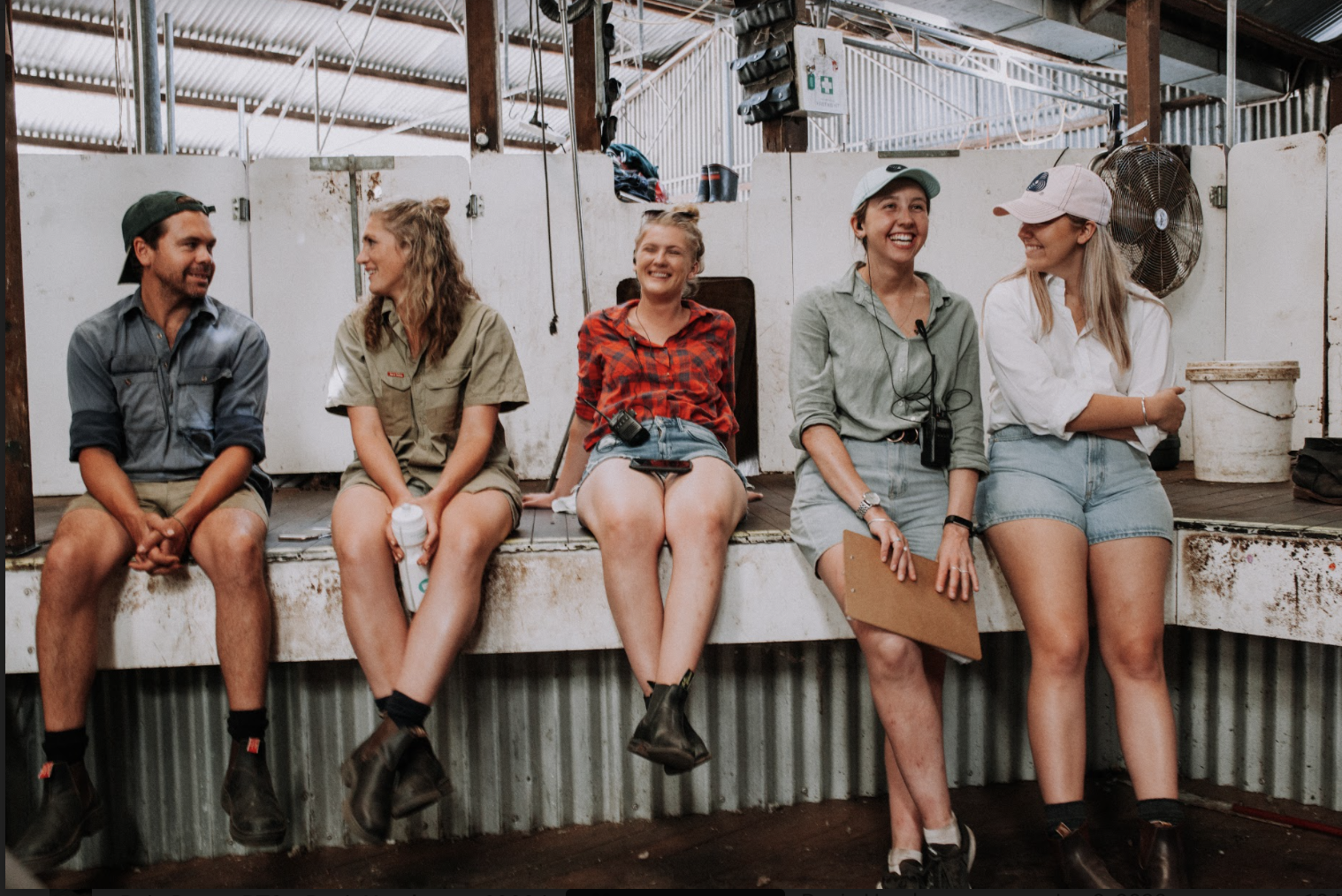
Behind the scenes of ‘Homespun’.
When I was working in Sydney in various roles – marketing, partnerships, digital content creation, producing – it became increasingly apparent to me why we continually see stereotypes, clichés and misrepresentations of regional Australia. We’re fed this imagery of people (usually men) wearing Akubra hats and standing in an open paddock or represented as bogan, hillbilly stereotypes; or dark, sinister depictions that highlight the isolation. Common themes of drought and despair are often central, and although these experiences are very much part of regional living, they can be exaggerated and come at the expense of other themes like resilience, connection, community spirit and innovation.
The nuance and progressive nature of regional Australia is not explored because the people telling the stories at a high level within film and television are primarily city people. They are not usually familiar with the depth of authentic regional experiences, tending to dip in and out of the country and only capturing the surface level story.
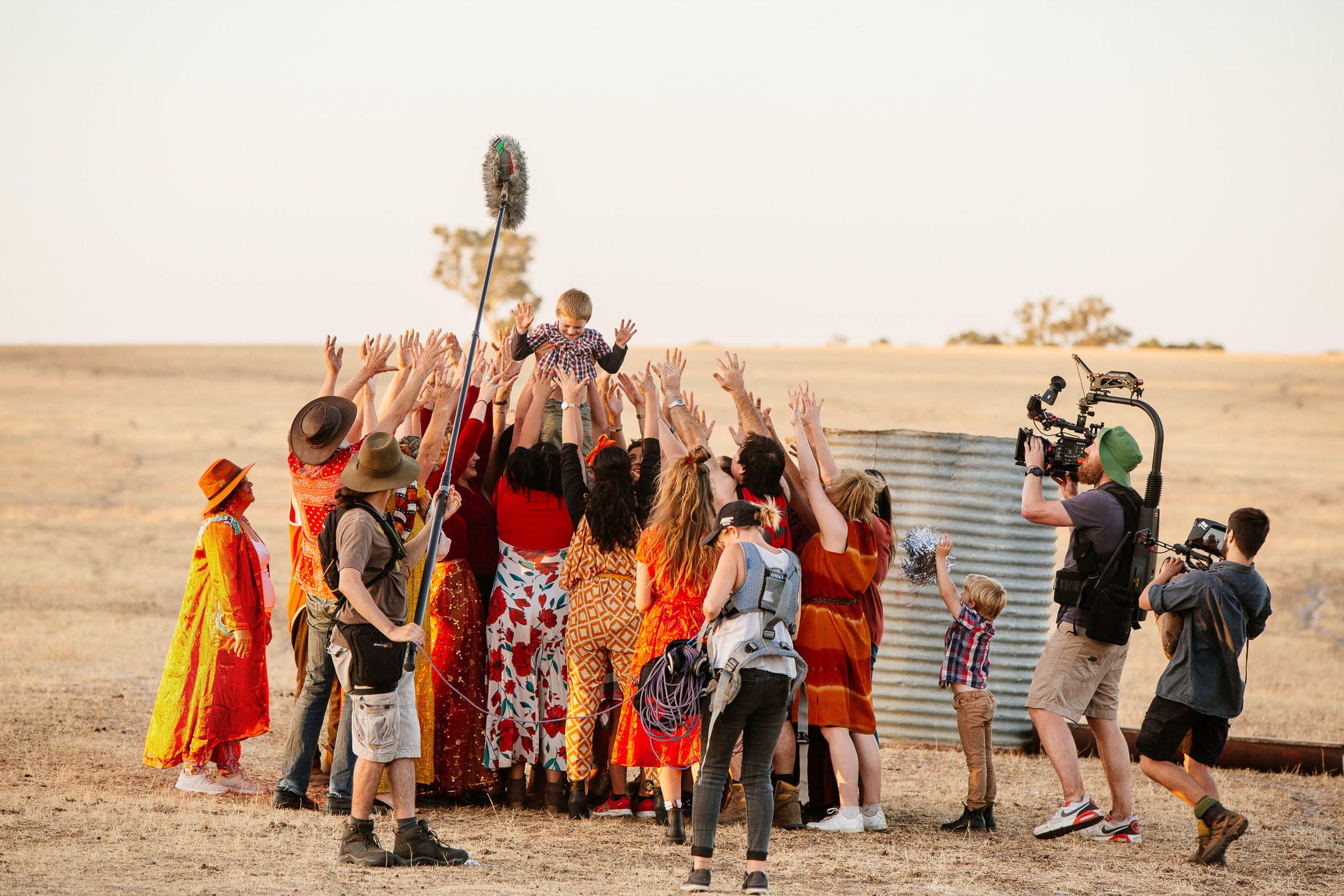
Behind the scenes of ‘Homespun’.
I wanted Homespun to show the potential in regional Australia by featuring regional Australians in every aspect – both in front of and behind the camera in cast and crew roles. My hope is that people will watch it and be inspired to create their own fictions within the regions, as there is so much creative talent in regional Australia that gets overlooked by the city and frequently goes undiscovered. In this way, Homespun showcases the depth of creativity beyond the city and it erodes romantic ideas about regional Australia by celebrating authentic representations that are very modern.
There are many documentaries and non-fiction shows about life in the regions, but there is a significant lack of scripted fictional or dramatic series told from the perspective of regional Australians. I really wanted to create a fictional story that reveals a different way of looking at the people and ideas expressed in regional communities. Scripted fiction also enables people to feel and connect as humans, instead of having issue-based ideas projected at them.
I decided to put many different regional people side-by-side so that city people can see how regional Australia is progressive, and to remind regional Australians that we don’t need to conform to the stereotypes that have been created.
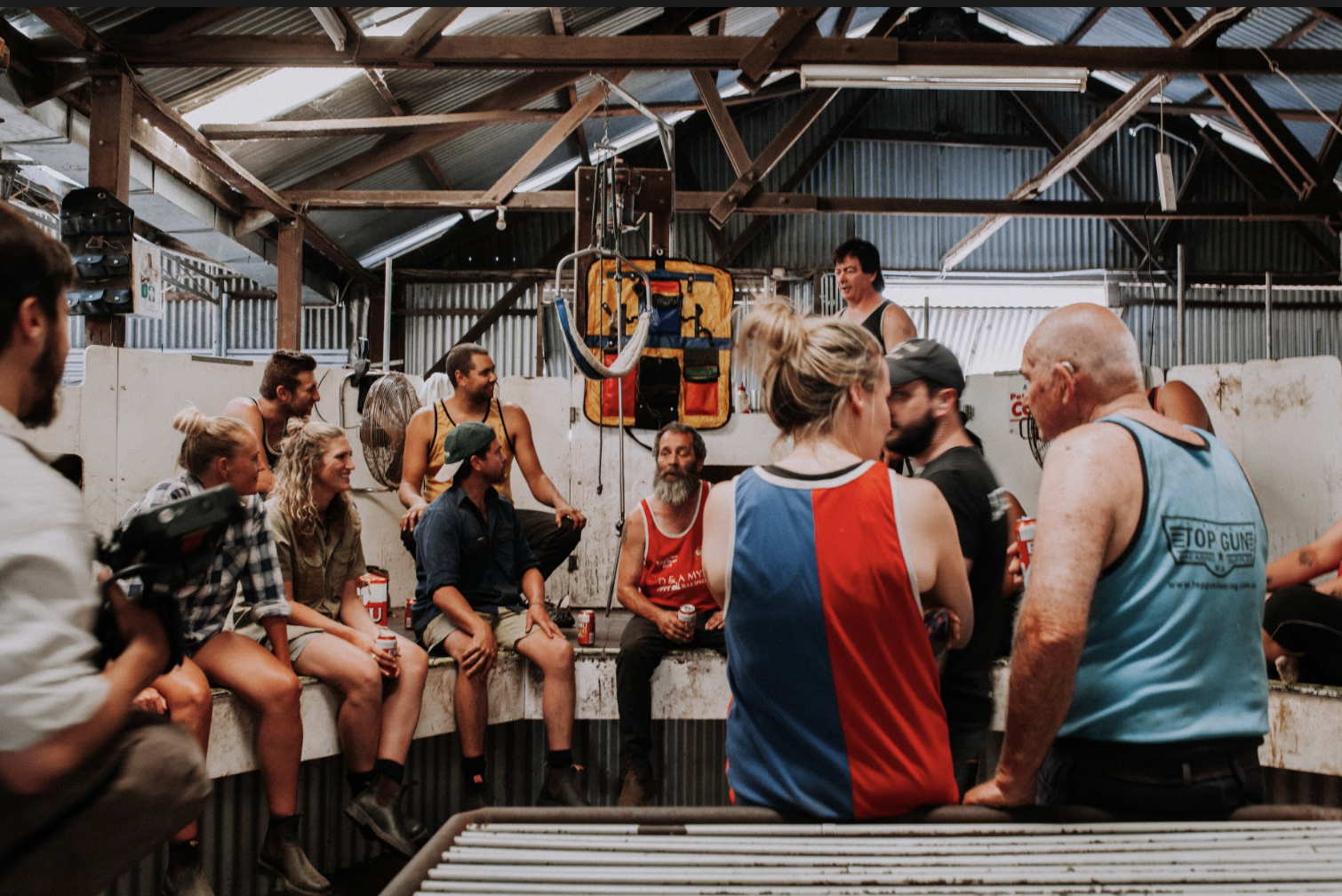
Local shearers stepped into acting roles for the production of ‘Homespun’.
The art and impact
Homespun is not your conventional story or format. It was very much influenced by my journey with digital media.
I created the platform Rural Room to connect with regional audiences, as I felt I had disconnected from the experience by living in the city. I launched a micro pilot on the Rural Room platform to check if there was an audience for the series – it received over 100,000 views in the first few weeks of launch, which quickly substantiated that there was a strong appetite for it.
On digital platforms, your audience has a voice, and you develop a relationship with the audience as the digital experience is very interactive. That’s why the main character, George, was created to mirror the actual mission I champion, which is to see a modern regional Australia, connect with regional Australians and allow regional people to tell their own stories.
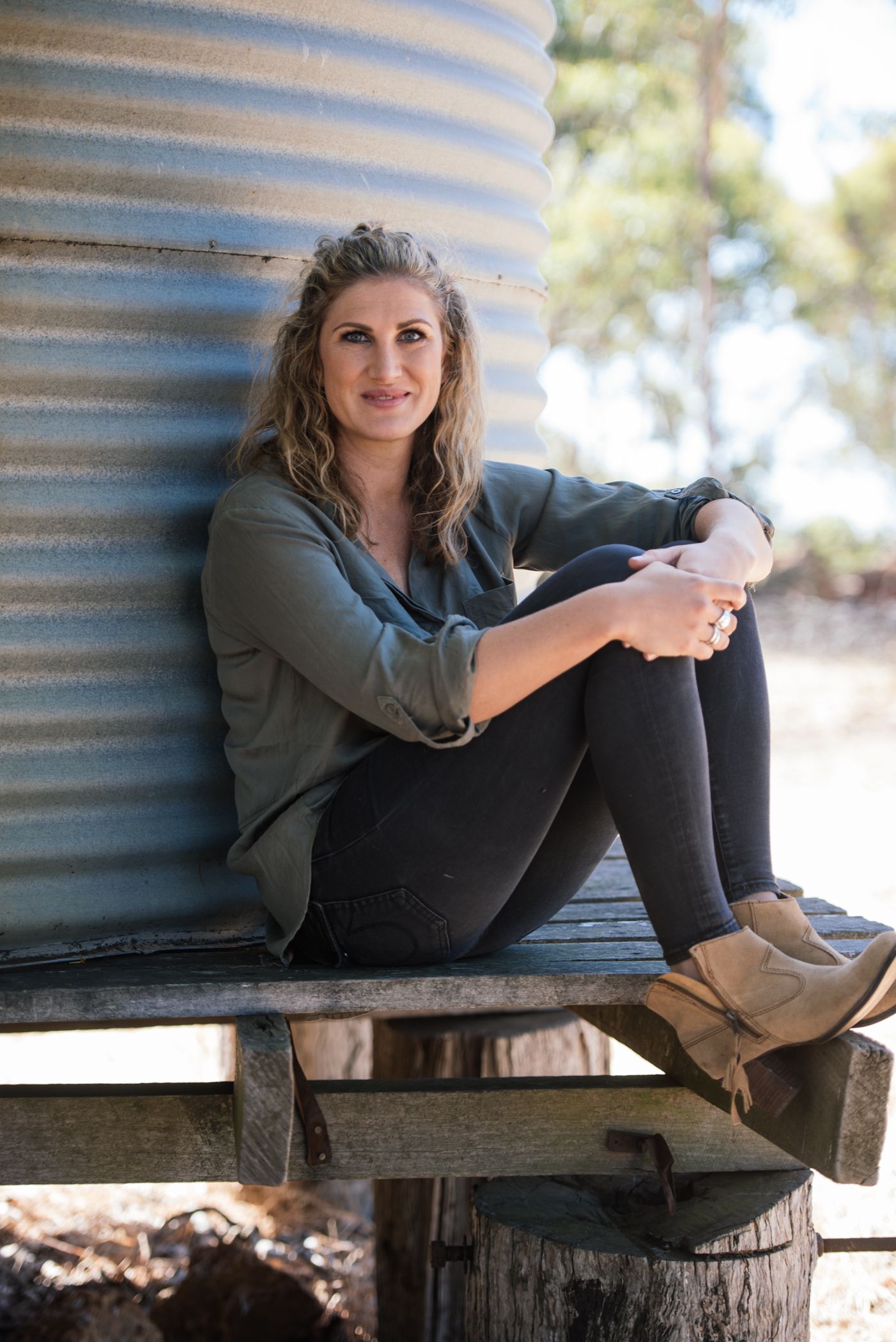
Curtin graduate Bec Bignell, the show’s Producer and co-star.
Homespun has some very vibrant mini segments that are connected by artistic animations that break up the traditional linear narrative trajectory. These segments are designed to reflect George’s imagination and showcase her perception of her regional world, which comes together in the digi-show she creates, ‘Stories from the Sticks’.
I’ve deliberately experimented with structure and point of view to empower a multitude of characters so that a broad spectrum of viewers can find someone they relate to and connect with. Some of these characters are uplifting and some of them show the frictions that exist within regional communities and corporate cultures.
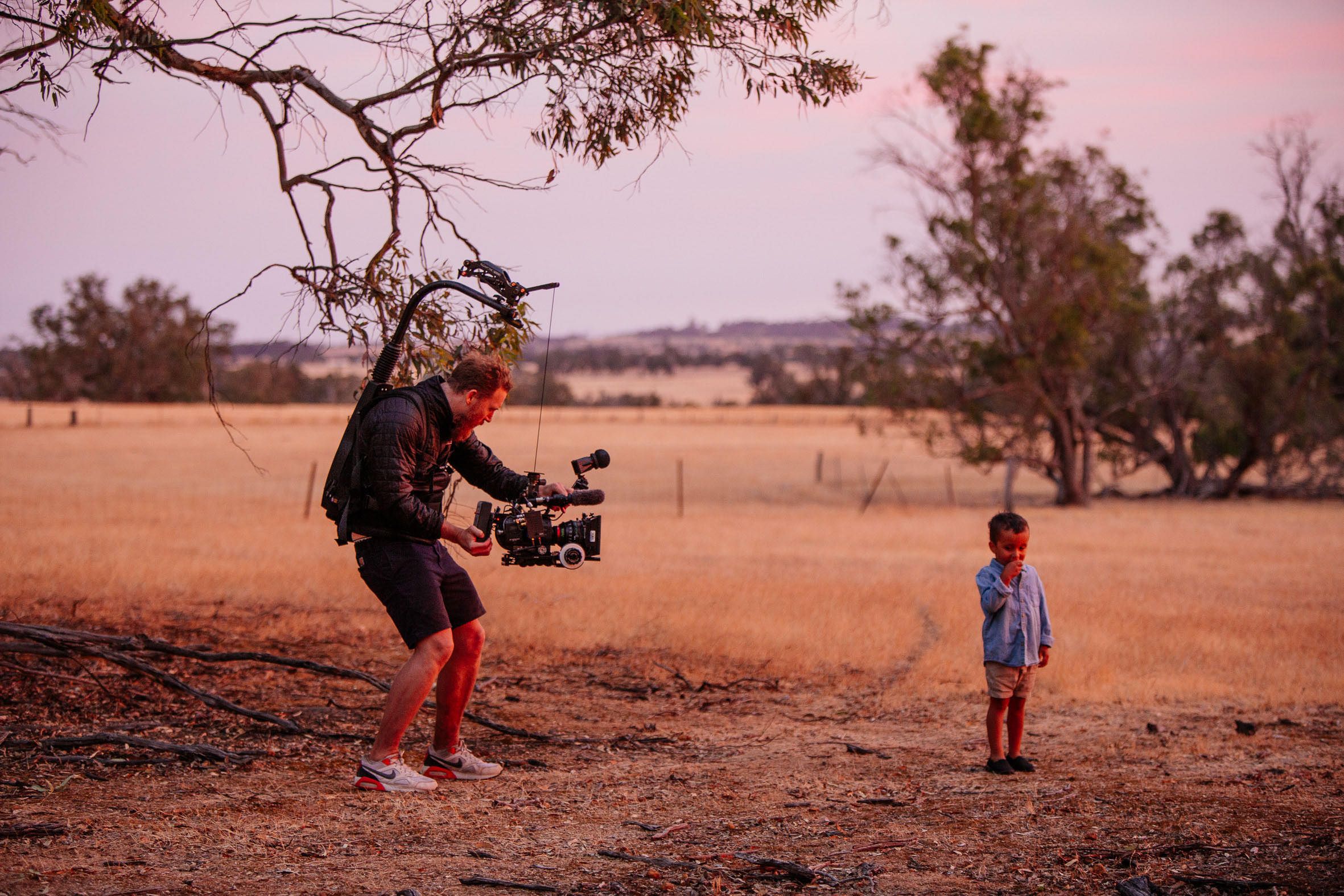
Behind the scenes of ‘Homespun‘.
I could have written a bush romance, cobbled together some dramatic moments, thrown in some conflict and resolved everything comfortably so the audience gets that payoff we’ve come to expect in traditional narratives, but I wanted to make it a really active and engaging experience for the audience.
Digital consumption can make audiences passive and less inclined to fully invest in shows, as it’s so easy to mindlessly scroll through endless content. Even though Homespun is digital, I integrated digital functions in the series to elicit active responses from the audience and encourage them to really immerse and interact with the series. I connected the episodes in a full-length version so I could tour the series in regional communities and ensure regional people could access it in a physical sense. What has been really exciting is the very evident level of interaction that has been occurring in the screenings so far – we hear people laugh out loud, gasp, and have very audible, interactive responses. But by still making it a digital series, it also enables the story to be more accessible to regional audiences, and it encouraged me to experiment with story conventions and viewer experience.
I believe there’s a respectful relationship between audience and creator whereby the audience should show respect to the creator by really leaning into the story experience, and reciprocally the creator should respect the audience and create work that doesn’t patronise them.
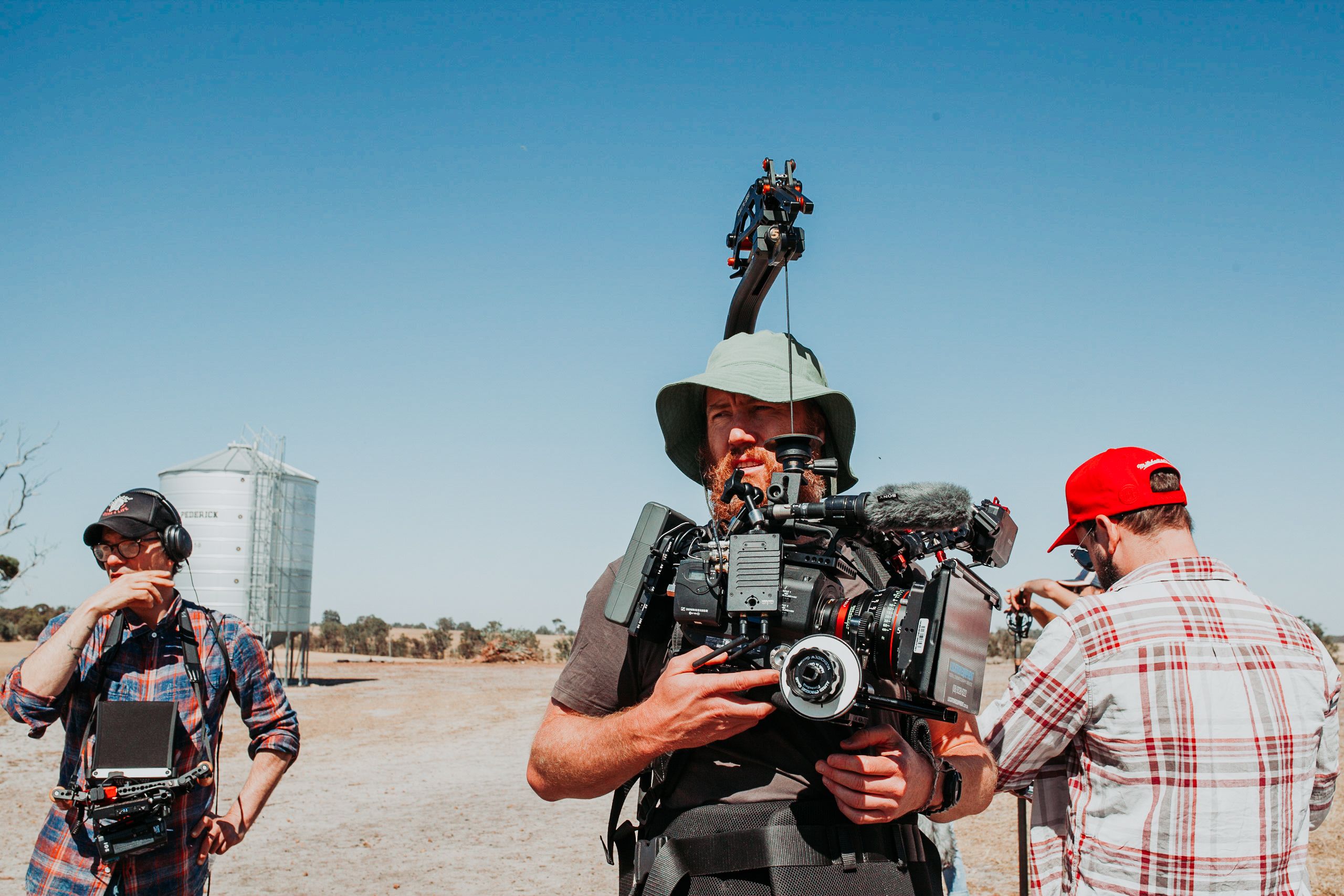
Crew filming on location.
Sometimes as creators we feel a need to solve all the problems for the audience and give them all the information so they don’t have to think about anything too hard. I wanted to create something where people could move between the gaps, enjoy unpredictable moments and navigate the series in a way that wasn’t forced upon them – where they don’t need to identify with the protagonist and where they can find meaning in what is unique to them.
Homespun is fully loaded – it’s fast paced, textured, multi-layered, colourful and explores the ideas of hope, resilience, connection to land, natural instinct, season and the cyclical nature of life. It challenges commonly held ideas about the bush being “backwards” by converging city and country worlds through shared, contemporary issues. It also presents modern day bush feminine figures as vibrant, vivacious characters who are highly visible, adventurous and entrepreneurial.
I hope Homespun reminds Australians and people everywhere that our creativity is boundless; it can come in an array of different shapes and colours, whether you’re from the country, city, or anywhere else. I also hope it inspires people to reconnect with their inner artist and challenge themselves to explore the stories simmering within them just beneath the surface.
You can now watch Homespun on STAN here.
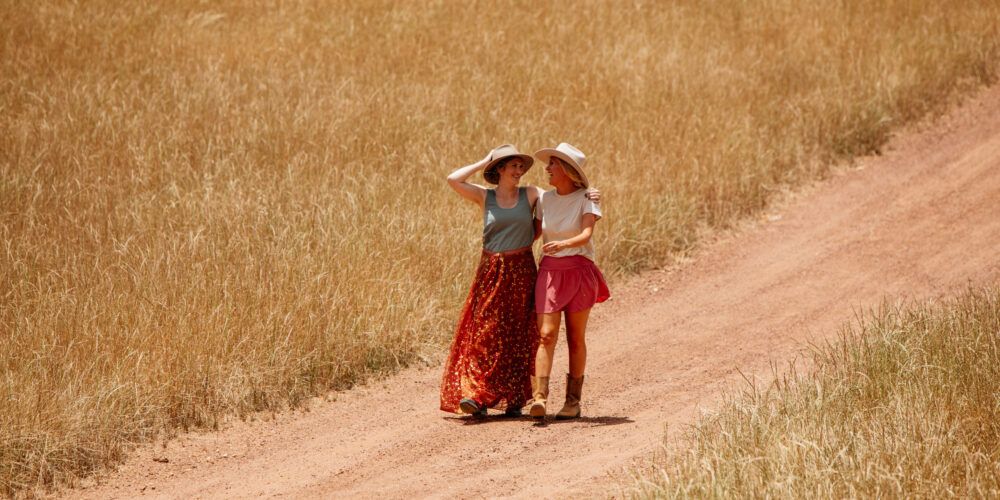
Promotional photo for ‘Homespun’.
Author | Bec Bignell | Introduction by Luisa Mitchell
___



